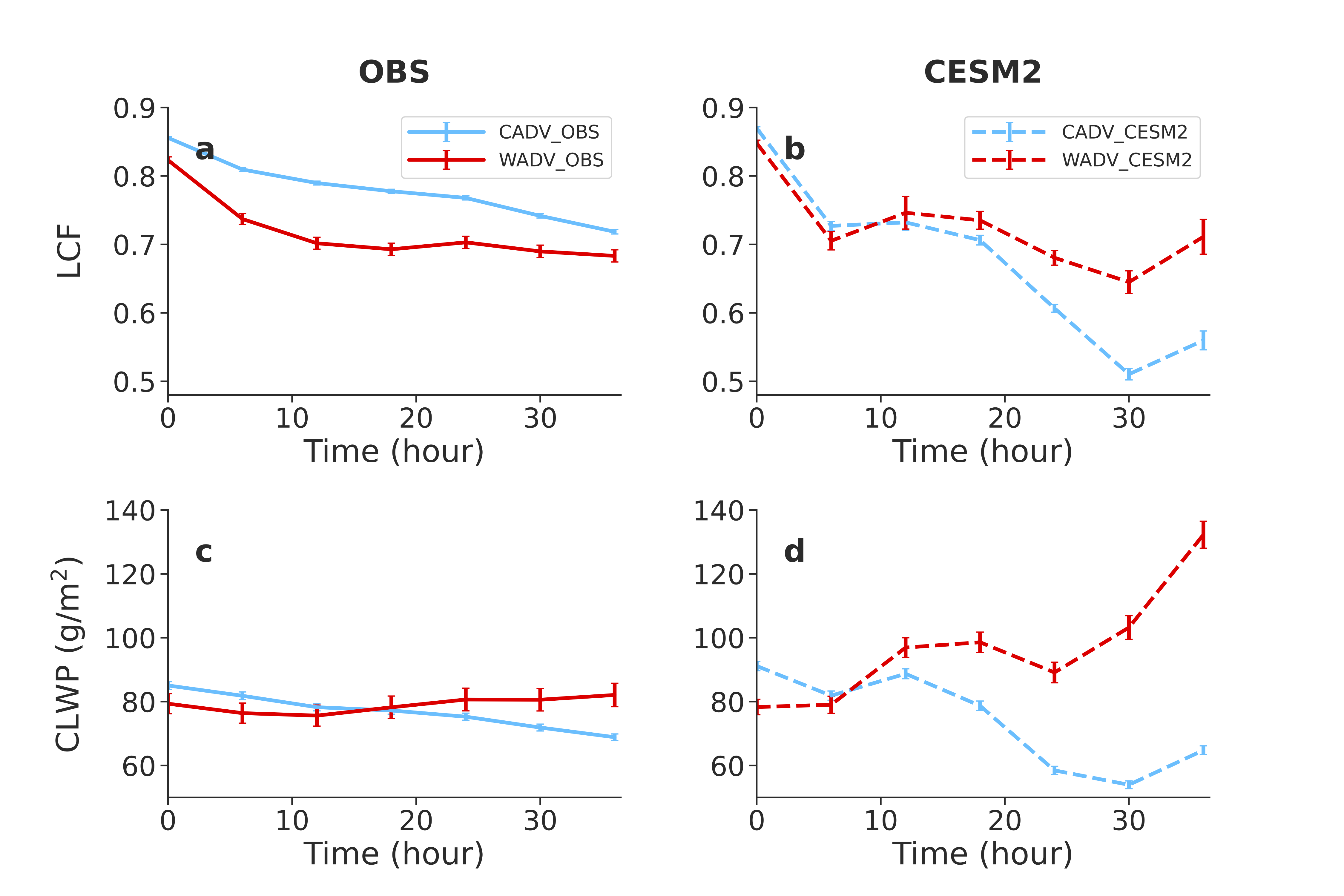Key deficiencies of CESM2 in simulating stratocumulus evolution under cold versus warm advection
Submitter
Li, Zhanqing — University of Maryland
Zhang, Haipeng — University of Maryland, College Park
Area of research
Cloud Processes
Journal Reference
Science
The influence of temperature advection (Tadv) on stratocumulus clouds (Sc) is highly uncertain in climate models. Previous studies have demonstrated distinct impacts of physical processes on cloud properties under contrasting Tadv conditions: cold-air advection (CADV) and warm-air advection (WADV). Accurate representation of those physical controls in both Tadv scenarios is crucial to mitigating climate prediction uncertainties. It is, therefore, necessary to examine how well the physical processes governing Sc evolution under these contrasting Tadv conditions are represented in climate models.
Impact
Through a Lagrangian framework, we revealed that the Community Earth System Model 2 (CESM2) simulates a too-rapid decline in low-cloud fraction (LCF) and cloud liquid water path (CLWP) under CADV conditions, aligning more closely with observed LCF under WADV conditions, but overestimates the increase in CLWP.
Using an explainable machine learning approach, we found these errors to be caused by amplified drying or moistening effects due to improper treatments of meteorological controls on clouds in CESM2. Our findings suggest that these misrepresentations of cloud physics in the midlatitudes should be improved to reduce climate prediction uncertainties.
Summary
The simulated rapid reduction in LCF and CLWP under CADV conditions, or the too-rapid stratocumulus-to-cumulus transition issue in CESM2, is found to be related to the overestimated drying effects induced by sea surface temperature (SST), whereas the substantial increase in CLWP under WADV conditions is associated with the overestimated moistening effects of free-tropospheric moisture and surface winds. Our findings suggest that overestimated drying effects due to SST and moistening effects from free-tropospheric moisture and surface winds might contribute to the high equilibrium climate sensitivity in CESM2. This study showcases a useful machine-learning-based framework for assessing the representation of cloud physics in climate models, offering the potential for its application in CMIP6 model comparisons regarding meteorological controls on clouds in future studies.


